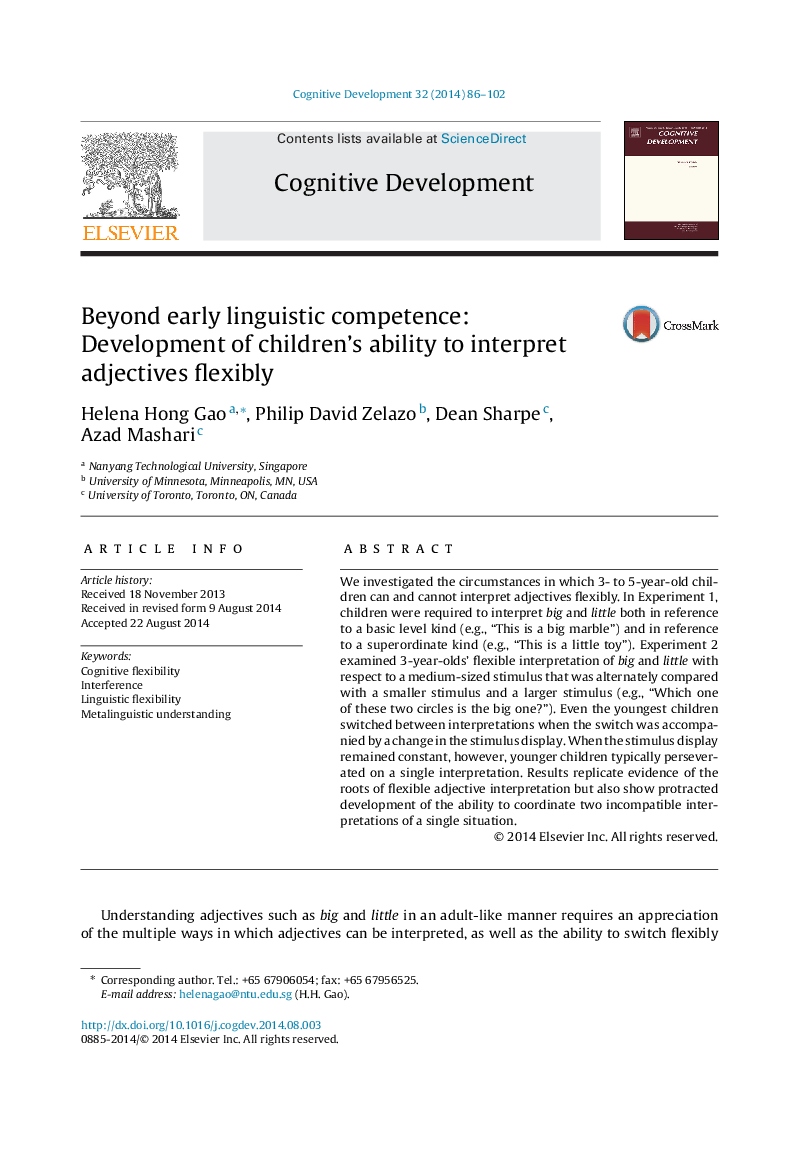| Article ID | Journal | Published Year | Pages | File Type |
|---|---|---|---|---|
| 7272502 | Cognitive Development | 2014 | 17 Pages |
Abstract
We investigated the circumstances in which 3- to 5-year-old children can and cannot interpret adjectives flexibly. In Experiment 1, children were required to interpret big and little both in reference to a basic level kind (e.g., “This is a big marble”) and in reference to a superordinate kind (e.g., “This is a little toy”). Experiment 2 examined 3-year-olds' flexible interpretation of big and little with respect to a medium-sized stimulus that was alternately compared with a smaller stimulus and a larger stimulus (e.g., “Which one of these two circles is the big one?”). Even the youngest children switched between interpretations when the switch was accompanied by a change in the stimulus display. When the stimulus display remained constant, however, younger children typically perseverated on a single interpretation. Results replicate evidence of the roots of flexible adjective interpretation but also show protracted development of the ability to coordinate two incompatible interpretations of a single situation.
Keywords
Related Topics
Social Sciences and Humanities
Psychology
Developmental and Educational Psychology
Authors
Helena Hong Gao, Philip David Zelazo, Dean Sharpe, Azad Mashari,
